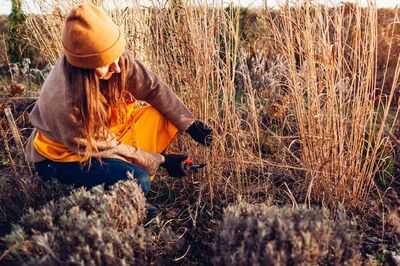As frost edges in and we start tidying up the garden for the colder months, many do not realise that a seemingly harmless green waste bag could land them in serious trouble.
Gardeners across the UK are being warned that dumping certain plants, especially those classed as invasive species, could result in a fine reaching £5,000 or more.
According to waste management expert AliLijee of Rubbish.com, the rule of thumb is: if the species is invasive, you cannot just chuck it in the green bin and forget about it.
"In the autumn and winter, when we clear out over-grown beds, pull up summer perennials and rake leaves and stems, the temptation to bag everything and hand it to the council is high, but wrong disposal could cost you dearly.
"While many local councils publish their garden-waste guidelines online, the tricky bit is recognising what goes in the bin and what doesn't. Specifically, plants that are classed as invasive non-native species must be handled with care, or legal consequences may follow.
"For example: Japaneseknotweed, Gianthogweed, Himalayanbalsam, Rhododendronponticum and NewZealandpygmyweed are all on the Government's list of restricted species," the expert revealed.
Lijee explains: "In autumn you might be clearing out the old border, chopping down last year's foliage, disposing of pond plants or dead shrubs, with lots of potential to make a mistake. If you toss in material from one of the listed species you risk not just a fine but possible prosecution."
In England and Wales, legal guidance states that you must not "import, keep, breed, transport, sell, grow, cultivate or allow to reproduce" any of the listed invasive alien plants. That means even if you found the plant in your own garden, you cannot simply bag it up as general green waste and send it off.
If local collections discover such material in a garden waste bin, the consequences vary: an initial contamination - for example, dumping soil, pet waste or food waste in the garden-waste stream - may result in a warning or smaller fine (for example, around £100).
But if you repeatedly ignore the rules, or if you've disposed of invasive species incorrectly, the fine can climb to £5,000 (and for companies even higher). In the worst-case scenario you could even face prosecution for environmental harm.
"With winter around the corner, and with fallen leaves, spent shrubs, pond plants and soil being moved about, now is a good time to check what you've got," Lijee urges. "Ask yourself: is this simply garden clippings, or could it be something that's legally controlled?"
To help your autumn/winter garden clear-up go smoothly, Lijee shared a few extra pointers that many gardeners don't know:
1. Recognise the high-risk plants
"Those five I mentioned are the most infamous. For example, Japanese knotweed is a nightmare: its rhizomes can survive freezing temperatures and re-sprout, and it is classed as "controlled waste" in the UK.
"Giant hogweed is hazardous not only for ecology but also for humans - its sap can cause skin blistering when exposed to sunlight," said the expert.
2. Don't assume that one bin rule fits all
"Just because your council collects garden-waste bins doesn't mean every plant/clipping qualifies. Soil, animal waste, food waste and invasive plants should usually go through a different route. If you pop them in the garden waste bin you may be contaminating the batch, and that can lead to your service being suspended," said Lijee.
3. Use the right disposal route
"If you discover an invasive species on your property, you will likely need to use a licensed waste carrier and an approved disposal facility, or follow detailed advice from the GBNonNativeSpeciesSecretariat.
"Composting at home won't always kill the seeds or roots of aggressive plants, so 'green bin' is not a safe option," said the expert.
4. Don't wait for spring to deal with it
"Autumn and winter are perfect times to get on top of things. When plants are dying back, you can clearly assess what belongs where, check borders and ponds and remove problem plants before they spread underground or into waterways.
"Local councils generally give one or two warnings before moving to enforcement. But the best approach is to assume that if you are unsure whether a plant qualifies as invasive, check the list or contact your council before dumping it," the expert advised.
You may also like

NATO expert issues drone war warning to UK and Europe as Russia 'drives wedges'

Man's Rolex seized at Delhi airport; HC provides relief— Check how customs rules apply to declaring high-value items

Instagram introduces a new feature called Watch History for Reels. Learn how to rewatch previously viewed Reels here.

How humans almost vanished from Earth in 70,000 BCE due to volcanic winter and population collapse

Martin Lewis shares genius advice on how to keep home warm in winter - and it's free







